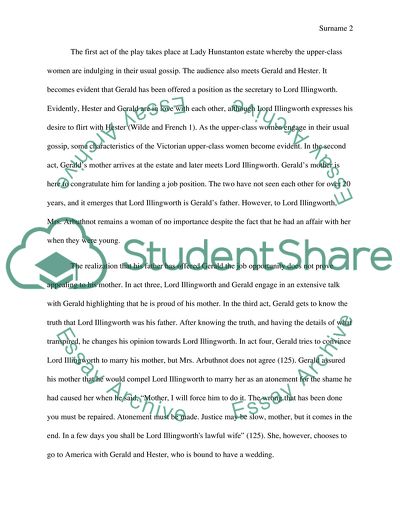Cite this document
(“Explore the ways that Wilde presents women in 'A Woman of no Essay”, n.d.)
Explore the ways that Wilde presents women in 'A Woman of no Essay. Retrieved from https://studentshare.org/literature/1681264-explore-the-ways-that-wilde-presents-women-in-a-woman-of-no-importance-the-compare-wildes-representation-with-brontes-representation-of-women-in-jane-eyre
Explore the ways that Wilde presents women in 'A Woman of no Essay. Retrieved from https://studentshare.org/literature/1681264-explore-the-ways-that-wilde-presents-women-in-a-woman-of-no-importance-the-compare-wildes-representation-with-brontes-representation-of-women-in-jane-eyre
(Explore the Ways That Wilde Presents Women in 'A Woman of No Essay)
Explore the Ways That Wilde Presents Women in 'A Woman of No Essay. https://studentshare.org/literature/1681264-explore-the-ways-that-wilde-presents-women-in-a-woman-of-no-importance-the-compare-wildes-representation-with-brontes-representation-of-women-in-jane-eyre.
Explore the Ways That Wilde Presents Women in 'A Woman of No Essay. https://studentshare.org/literature/1681264-explore-the-ways-that-wilde-presents-women-in-a-woman-of-no-importance-the-compare-wildes-representation-with-brontes-representation-of-women-in-jane-eyre.
“Explore the Ways That Wilde Presents Women in 'A Woman of No Essay”, n.d. https://studentshare.org/literature/1681264-explore-the-ways-that-wilde-presents-women-in-a-woman-of-no-importance-the-compare-wildes-representation-with-brontes-representation-of-women-in-jane-eyre.


